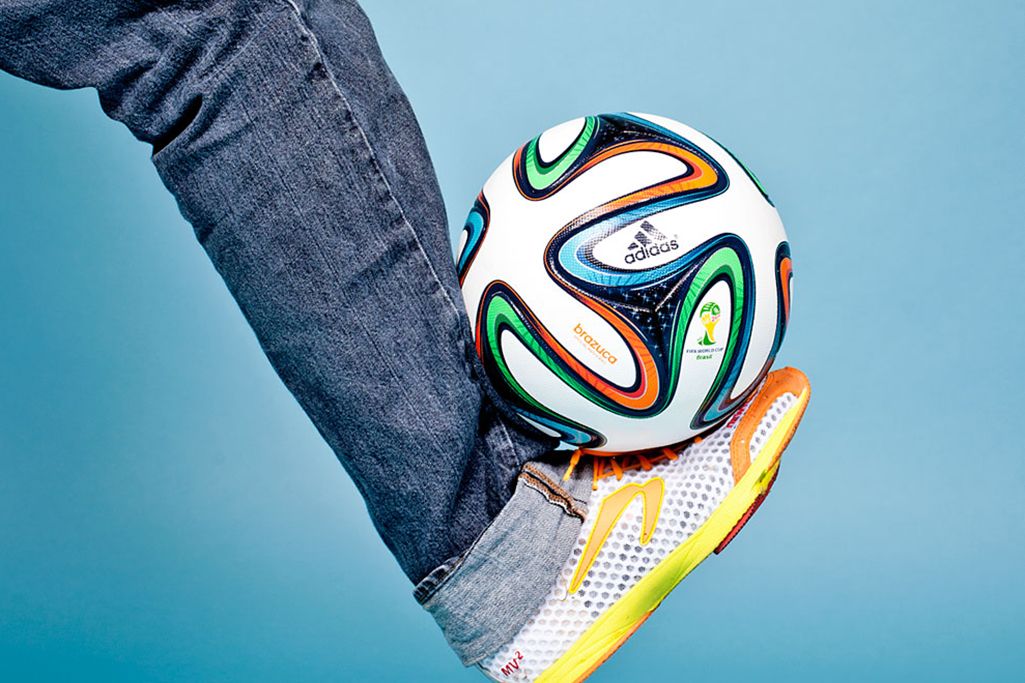You ever kick one of those super smooth soccer balls really hard and watch it just… defy physics? That feeling, that moment when a ball you struck perfectly suddenly veers off course twenty yards later, that’s exactly the problem the pros had with the 2006 World Cup ball, the Teamgeist. I got obsessed with figuring out why this happens, and trust me, it wasn’t just the players whining.

I decided to stop reading old articles and actually put in the practice hours to feel the difference myself. My setup was simple. I didn’t need a wind tunnel or high-speed cameras. I just needed my feet, a large field, and three different balls: a traditional 32-panel stitched ball (the benchmark for stability), a modern thermally bonded ball (which usually has six to eight larger panels), and crucially, I tracked down a used, but still decent, Teamgeist replica. The real Teamgeist was revolutionary because it only had 14 panels, meaning fewer seams and much smoother surface area overall. That smoothness, as I quickly found out, is where the trouble starts.
The Kicking Test: Tracking Chaos
My entire practice revolved around one specific shot type: the knuckleball. This is when you hit the center of the ball dead-on, trying to impart absolutely no spin. If a ball is stable, it should hold its trajectory based purely on the initial force. If it’s unstable, the lack of rotation means the airflow doesn’t stabilize, and it dances all over the place. That’s the physics lesson right there.
I started with the old 32-panel ball. It was boringly reliable. I kicked it twenty times, aiming at a specific spot on a chain-link fence 40 yards away. It traveled straight. Maybe it wobbled a tiny bit, but nothing dramatic. It behaved itself. The seams acted like little guides, grabbing the air, keeping the flow attached to the ball, and maintaining what physicists call a turbulent boundary layer. Turbulent flow is good flow; it keeps the ball stable.
Next up was the modern, sleek six-panel ball. Already, I felt a difference. Even with no spin, it felt like it was searching for stability. It might drift a foot or two right, then suddenly correct itself. But it was manageable.
Then came the Teamgeist. This thing was pure menace.

- I tried the same twenty kicks.
- I made sure my technique was identical—hit it hard, zero spin.
- The results were shocking.
On maybe half the shots, it looked fine for the first twenty yards. But then, as the speed dropped just slightly, you could visibly see the change. The ball would suddenly shoot upward, or violently dive, or just hook five feet left. It wasn’t a curve caused by spin; it was a sudden, mid-flight lurch caused by the air flow separating abruptly. The ball seemed to choose its own adventure.
Understanding the Flight Physics: It’s All About the Seams
My practical testing confirmed what the scientists were saying back in 2006. The fewer seams you have, the larger the smooth panels are. When you kick a smooth ball very hard (at high velocity), the air flow around it stays smooth, or laminar, for too long. Laminar flow is susceptible to tiny disturbances. If the ball has even the slightest microscopic imperfection or if one side catches the air differently, that flow separates dramatically.
Those deep seams on the old 32-panel balls forced the air to turn turbulent immediately, even at high speeds. That turbulence keeps the wake behind the ball small and consistent, which means less drag and predictable flight. The Teamgeist, however, hit what’s called the “drag crisis” at precisely the speed ranges used in professional kicking. When the velocity dropped slightly into this crisis zone, the flow separated, the drag shot up, and the ball went from stable flight to falling off a cliff.
Players couldn’t rely on it because the transition happened randomly and violently. That’s why goalkeepers hated it. They could track the shot perfectly, and then in the last five yards, it would swerve out of reach. It wasn’t the players; it was geometry fighting fluid dynamics.
Why I Went Down This Rabbit Hole
You might be thinking, why would a grown man spend hours at the park trying to hit a fence with balls from two decades ago? Because I was humiliated last month. We were playing a regular Sunday league match, nothing fancy, but it was important for bragging rights. I’m usually the guy who takes the free kicks because I’m decent at hitting it hard and low.

We got a free kick just outside the box, right in the dying minutes. I stepped up, feeling the pressure. The game ball we were using that day was one of those brand new, super-slick, low-panel types—the direct descendant of the Teamgeist instability. I struck it perfectly, low and hard, aimed just under the crossbar.
I watched it go. The keeper committed. It was a sure goal. Then, maybe ten feet before the line, it did the Teamgeist dance. It didn’t curve; it dipped, like someone pulled a rope attached to it. It hit the top of the crossbar and bounced out. We lost the game zero-zero. Everyone looked at me like I choked.
I knew, deep down, I hadn’t choked. I hit the shot I always hit. That ball betrayed me. I got so mad I spent the next two weeks researching every single scientific paper on soccer ball flight since 2002. I had to prove it wasn’t my foot that failed, but the aerodynamics of the equipment. I needed to understand that chaotic feeling. That’s how I ended up comparing modern balls to the infamous Teamgeist. Now I know. And next time I play, I’m bringing my own stitched ball, or at least one with some decent seams on it. Never again will I let fluid dynamics ruin my Sunday afternoon.
